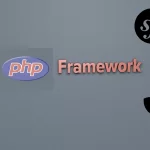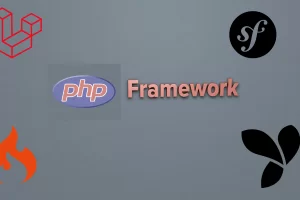Embarking on your Laravel development journey with Visual Studio Code is a promising venture that opens doors to efficient and streamlined coding experiences. In this guide, we will demystify the process of Installing Laravel in Visual Studio Code, ensuring you not only set up your environment seamlessly but also leverage the powerful features of both Laravel and VS Code for a robust development workflow.
Installing Laravel in Visual Studio Code marks the first crucial step toward building dynamic web applications with one of the most popular PHP frameworks. Whether you’re a seasoned developer looking to explore Laravel’s capabilities or a newcomer eager to dive into web development, this guide will serve as your compass, guiding you through the intricacies of the installation process.
Visual Studio Code, a versatile and feature-rich code editor, becomes an ideal companion for Laravel development. Its intuitive interface, coupled with a myriad of extensions, transforms coding into an enjoyable experience. As we delve into the installation steps, we’ll also explore key VS Code extensions tailored for Laravel, unlocking the full potential of your development environment. Join us on this journey as we lay the foundation for your Laravel endeavors within the immersive landscape of Visual Studio Code.
Setting Up Laravel
Setting up Laravel for your development environment is a pivotal process that lays the foundation for building robust web applications. In this section, we’ll guide you through the essential steps to ensure a seamless installation of Laravel in Visual Studio Code.
1. Installing Laravel in Visual Studio Code
Installing Laravel in Visual Studio Code starts with ensuring you have Visual Studio Code (VS Code) installed on your machine. Navigate to the official VS Code website, download the latest version, and follow the installation instructions tailored to your operating system. Once the installation is complete, launch VS Code, and you’re all set to embark on the Laravel installation journey.
In the integrated terminal of VS Code, navigate to your preferred project directory. Here, we employ Composer, the dependency manager for PHP, to fetch and install Laravel. Run the following command:
composer create-project --prefer-dist laravel/laravel projectNameReplace “projectName” with your desired project name. This command fetches the latest Laravel version and sets up a new project in your specified directory. The “–prefer-dist” flag ensures a stable distribution is downloaded.
2. Configuring Your Laravel Environment
With Laravel successfully installed, navigate to the project directory using the command line or the integrated terminal in VS Code. Here, you’ll find a file named .env.example. Duplicate this file and rename the copy to .env. The .env file is where you configure your Laravel application settings.
Open the .env file, and you’ll find various configurations, including database settings, application name, and more. Customize these settings based on your project requirements. Be sure to set a secure, unique key for the APP_KEY variable. Save the changes, and your Laravel environment is now configured and ready for further customization.
3. Laravel Artisan Commands
Artisan, Laravel’s command-line interface, is a powerful tool that simplifies various development tasks. In the integrated terminal of VS Code, you can run Artisan commands to perform actions such as migrating databases, seeding data, and running tests.
To launch the development server and view your Laravel application locally, run the following Artisan command:
php artisan serveVisit http://localhost:8000 in your web browser, and you should see the default Laravel welcome page. Congratulations, you’ve successfully set up Laravel in Visual Studio Code!
4. Laravel Debugging and Beyond
To enhance your development experience, consider installing additional VS Code extensions tailored for Laravel development. Extensions like “PHP IntelliSense” provide autocompletion and suggestions for Laravel functions, while “Laravel Blade Snippets” streamlines Blade template coding.
Also Read: How to Install Node.js and NPM on Windows and Mac?
VS Code Extensions to Supercharge Your Laravel Development
Visual Studio Code (VS Code) is not just a code editor; it’s a robust development environment that can be enhanced with a plethora of extensions. When it comes to Laravel development, specific extensions can significantly boost your productivity, offering features tailored to the intricacies of the framework. Let’s explore some essential VS Code extensions that will supercharge your Laravel development experience.
PHP IntelliSense:
No Laravel development journey is complete without the aid of intelligent code completion. The “PHP IntelliSense” extension for VS Code provides precisely that. With this extension, you’ll experience enhanced autocompletion and suggestions for Laravel functions and syntax. This not only accelerates your coding speed but also minimizes the chances of typos and syntax errors.Laravel Blade Snippets:
Laravel Blade, the powerful templating engine, is at the core of Laravel’s elegant syntax. The “Laravel Blade Snippets” extension simplifies Blade template coding by offering a collection of snippets for common Blade directives. Whether you’re working on loops, conditionals, or including subviews, these snippets save you valuable time and ensure consistency in your Blade templates.Laravel Artisan:
Managing your Laravel application from the command line is a breeze with the “Laravel Artisan” extension. This extension integrates Artisan commands directly into VS Code, allowing you to run commands without leaving your editor. From migrating databases to generating controllers, access the power of Artisan with the convenience of VS Code.Laravel Extra Intellisense:
For an extra layer of intelligence, consider adding the “Laravel Extra Intellisense” extension to your toolkit. This extension enhances the default PHP IntelliSense by providing additional support for Laravel-specific methods, classes, and facades. Enjoy an even more seamless coding experience with context-aware autocompletion.Laravel Snippets:
Speed up your development workflow with the “Laravel Snippets” extension, a collection of snippets that cover common Laravel tasks. From defining routes to creating model relationships, these snippets serve as handy shortcuts, reducing the amount of manual typing and ensuring consistency in your code structure.Laravel goto view:
Navigating between controllers and views is a common task in Laravel development. The “Laravel goto view” extension simplifies this process by allowing you to jump directly from a controller method to its corresponding Blade view or vice versa. This time-saving extension streamlines your code navigation, making it easier to understand the flow of your Laravel application.
Debugging Laravel Applications in Visual Studio Code
Debugging is an integral part of the development process, ensuring that your Laravel applications run smoothly and efficiently. Visual Studio Code (VS Code) provides powerful tools for debugging, and when combined with Laravel, it becomes a potent duo for identifying and resolving issues in your code. In this guide, we’ll walk you through the process of debugging Laravel applications using VS Code.
1. Installing Laravel Debugbar
Before diving into the debugging process, consider enhancing your debugging capabilities by installing the “Laravel Debugbar” package. This package provides a comprehensive overview of your application’s performance, database queries, and more. To install it, open your terminal in VS Code and run:
composer require barryvdh/laravel-debugbar --devOnce installed, add the service provider to your config/app.php file:
'providers' => [
// ...
Barryvdh\Debugbar\ServiceProvider::class,
],And finally, publish the configuration file:
php artisan vendor:publish --provider="Barryvdh\Debugbar\ServiceProvider"2. Configuring Xdebug for VS Code
To enable step-by-step debugging in your Laravel application, you’ll want to integrate Xdebug. Start by ensuring that Xdebug is installed in your PHP configuration. You can do this by checking your php.ini file or using a tool like phpinfo().
Next, configure VS Code to listen for Xdebug connections. In your VS Code settings, add the following configuration:
{
"name": "Listen for Xdebug",
"type": "php",
"request": "launch",
"port": 9000
}3. Setting Breakpoints
In your Laravel codebase, identify the areas where you suspect issues or simply want to inspect the code flow. Place breakpoints by clicking on the left gutter of the code editor in VS Code. When Xdebug is active, the application will pause execution when it reaches a breakpoint, allowing you to inspect variables, step through the code, and identify the root cause of any problems.
4. Running the Debugger
With breakpoints set and Xdebug configured, it’s time to run the debugger. Open the Run and Debug sidebar in VS Code, select the “Listen for Xdebug” configuration, and click the green play button. This will start the debugger, and your Laravel application will run in debug mode.
Visit your Laravel application in the browser, and when the code execution hits a breakpoint, VS Code will take control, allowing you to explore the state of your application at that point.
5. Inspecting Variables and Call Stack
While in debug mode, you can inspect the values of variables, check the call stack, and even modify variables on the fly. Use the debug sidebar in VS Code to navigate through the debugging features. This level of visibility into your code’s execution is invaluable for identifying and resolving issues.
By following these steps, you’ve successfully set up and utilized the debugging tools in Visual Studio Code for your Laravel application. Whether you’re troubleshooting complex issues or simply understanding the flow of your code, effective debugging is a crucial skill for every developer. Happy debugging!
Also Read: How To Set Up a GraphQL API Server in Node.js
Running Laravel Applications in Visual Studio Code
Congratulations on successfully setting up Laravel in Visual Studio Code! Now that your development environment is configured, it’s time to explore how to run and test your Laravel applications seamlessly. In this guide, we’ll walk you through the essential steps and commands to execute your Laravel projects within the integrated environment of Visual Studio Code.
1. Artisan Commands for Server Start
One of the key commands you’ll frequently use to run your Laravel application is provided by Artisan, Laravel’s command-line interface. Open the integrated terminal in Visual Studio Code and navigate to your project directory. To start the development server, use the following Artisan command:
php artisan serveThis command launches the built-in PHP development server, making your Laravel application accessible locally. By default, the server runs on http://localhost:8000, and you can access your application through this URL in your web browser.
2. Customizing Server Port
If you prefer a different port for your development server, you can specify it in the php artisan serve command. For example, to run the server on port 8080, use:
php artisan serve --port=8080Adjust the port number as needed, and then access your Laravel application through the specified port.
3. Accessing Your Laravel Application
Once the development server is running, open your web browser and navigate to the URL provided by Artisan, such as http://localhost:8000 or http://localhost:8080 if you customized the port. You should see the default Laravel welcome page, indicating that your installation was successful.
4. Artisan Commands for Development
Beyond serving your application, Artisan provides various commands for common development tasks. For instance, to run database migrations and seed the database with sample data, use:
php artisan migrate --seedExplore the wide range of Artisan commands to manage your application’s assets, run tests, and perform other essential tasks during development.
5. Stopping the Development Server
When you’re done working on your Laravel application, you can stop the development server by pressing Ctrl + C in the terminal where the server is running. This action terminates the server process, making the specified port available for other processes.
By following these steps, you’ve learned how to efficiently run your Laravel applications in Visual Studio Code. Whether you’re testing new features, debugging issues, or simply exploring the capabilities of your application, the integration of Laravel and VS Code provides a smooth and productive development experience. Happy coding!
Conclusion
In conclusion, the process of Installing Laravel in VS Code marks the gateway to a powerful and streamlined web development experience. By following the steps outlined in this guide, you’ve successfully set the groundwork for creating dynamic and robust Laravel applications within the versatile environment of Visual Studio Code.
As you navigate through the intricacies of Laravel installation, remember that this journey is just the beginning of your exploration into the expansive world of web development. Visual Studio Code’s intuitive interface and the Laravel framework’s rich features harmonize seamlessly, providing a conducive environment for both beginners and seasoned developers. Your newfound ability to effortlessly set up Laravel projects in VS Code lays the foundation for countless coding adventures.
Now equipped with the knowledge to efficiently set up your development environment, embrace the endless possibilities that Installing Laravel in VS Code opens up. Dive into Laravel’s extensive ecosystem, leverage the capabilities of VS Code extensions, and, most importantly, enjoy the process of bringing your web development ideas to life. May your coding endeavors be both fulfilling and rewarding. Happy coding!















